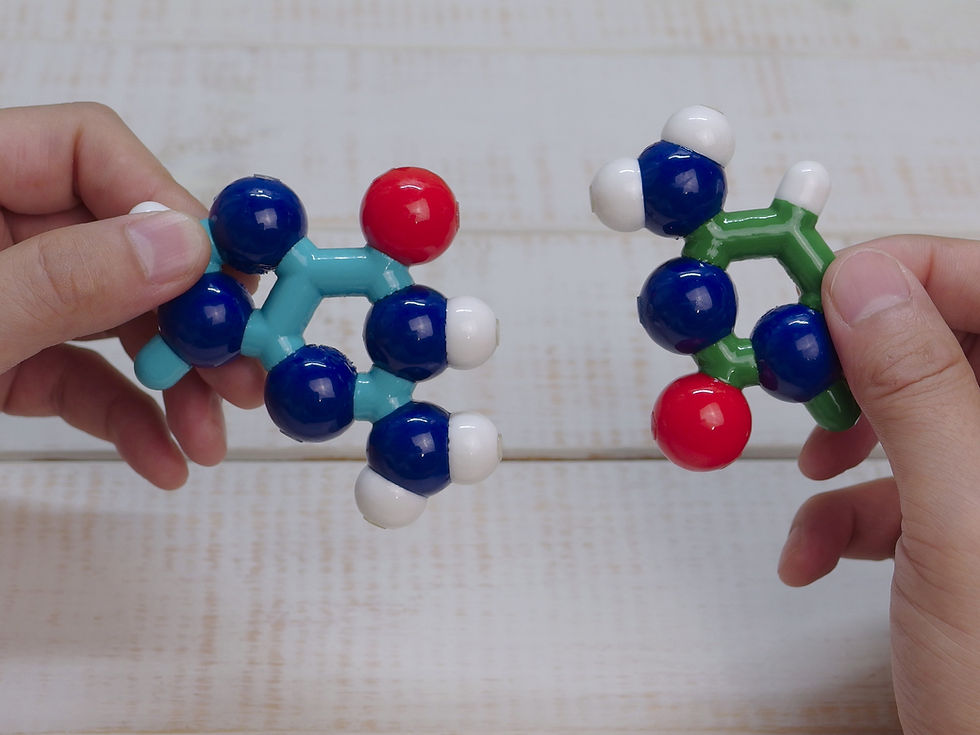top of page
Understand the structures
of four bases
The BasePairPuzzle contains four bases; A (orange), C (green), G (cyan) and U (purple). Their molecular frames with base's color are Carbon atoms. Hydrogen, Nitrogen and Oxygen atoms involved in hydrogen bonding are represented as white, blue and red balls, respectively.
* In order to prioritize easy of production, the BasePairPuzzle has U observed in RNA molecules instead of T found in DNA molecules.


A (Adenine)


C (Cytosine)


G (Guanine)


U (Uracyl)
Just touch it and play
First, you can just touch the BasePairPuzzle and play without thinking too much. The click feeling and sound may help you understand what is hydrogen bond and base pair.

Re-experience the discovery
of the DNA double helix
James D. Watson found the complementary A-T and G-C base pairs by using four bases out of stiff cardboard, resulting to the discovery of the DNA double helix (Watson & Crick, 1953, Nature). With the BasePairPuzzle, let's re-experience the history-making discovery.
Suddenly, I became aware that an adenine-thymine pair held together by two hydrogen bonds was identical in shape to a guanine-cytosine pair held together by at least two hydrogen bonds. All the hydrogen bonds seemed to form naturally; no fudging was required to make the two types of base pairs identical in shape. Quickly I called Jerry over to ask him whether this time he had any objection to my new base pair.
(James D. Watson, The Double Helix, 1968)

1/2

1/2
How many base pairs
can you create?
Would you be surprised if four bases can form about 150 types of base pairs other than A-T/T-A and G-C/C-G base pairs? In fact, it is known that RNA molecules can take complicated and sophisticated 3D structures by taking several non-Watson-Crick base pairs with different base combinations and geometries (Leontis et al., 2002, Nucleic Acids Res.). With the BasePairPuzzle, how many base pairs can you create?

1/2

1/2
Can you discover new base complexes?
Four bases can form not only "pairs" but also "triplets", "quartets" and even more higher-order complexes. Please discover new base complexes with the BasePairPuzzle.

bottom of page
